Apple variety Silver Hoof
Silver Hoof is a summer apple variety bred at the Sverdlovsk Experimental Gardening Station by crossing two apple varieties (Snowflake x Rainbow). The author of the apple tree is an outstanding Ural and Russian breeder Leonid Andrianovich Kotov. Since 1988, the variety has been zoned in the Ural, Volgo-Vyatka and West Siberian regions. Today it remains the leading variety in the Sverdlovsk, Kirov, Perm, Kurgan, Chelyabinsk, Orenburg and Udmurt regions. In addition, the Silver Hoof is propagated in fruit nurseries and cultivated at an active rate in other northern regions of our country, as well as in the northern part of Kazakhstan.

The trees are medium-sized or slightly below average. The crown is well filled and rounded. The main branches extend from the trunk almost at right angles, the bark on them is light, yellowish. In general, the branches are compact and have a regular, straight shape. The type of fruiting is mixed, mainly ringlets, spears and last year's growths bear fruit.
Shoots are straight, of medium thickness, brown in color, strongly pubescent, in cross section have a rounded shape. Leaves are matte, light green, can have a round and oval shape. The tips of the leaves are short-pointed. The leaf plate is flat, rounded at the base, average pubescence. The edges of the leaves are slightly raised upward and have a small double-gable serration. Petioles are medium in length. Stipules are small, subulate.
Flower buds are round, fleecy, medium in size. The flowers are cupped and broadly cupped, medium and large in size. The petals and buds are the same white. The petals are slightly closed, solid along the edge and slightly raised upward. The stigma of the pistils can be at the same level with the anthers or slightly rise above them.
The fruits of the Silver Hoof variety are one-dimensional and smaller than the average size, the weight of one apple is usually 80-90 grams, but sometimes it can reach 100-110 grams (depending on the place of planting, the harvest is smaller on poor soils). The fruits have a regular rounded shape, on the surface the apples are smooth, not ribbed or slightly ribbed. The skin is dry, not rough, smooth, a waxy coating is noticeable. The subcutaneous points on the apple are not visible. The main color of the fruits is of a thick cream shade, the integumentary color is strongly expressed on a significant proportion of the apple with a blurred orange-red blush or blurred-striped blush. The peduncle is straight, short in length, of medium thickness. Funnel of grayish-greenish color, slightly corroded, medium in width and depth, pointed conical in shape. A saucer with a smooth surface, it can be shallow or medium in depth. The heart is of medium size and bulbous in shape. The sub-calyx tube is cylindrical, short, medium in width, there is an expansion closer to the calyx. The seeds are full, round, of medium size, dark brown in color.
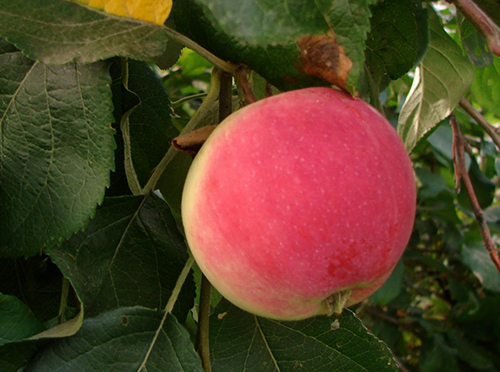
The pulp of the silver hoof fruit has a fairly dense, fine-grained structure and a creamy shade. Apples are very juicy, excellent sweet and sour taste, moderately aromatic. By chemical composition, the fruits contain: dry soluble substances (from 12.5 to 17.8%), sugars (from 10.2 to 12.9%), ascorbic acid (12.5 mg / 100 g), titratable acids ( 0.8%), P-active substances / catechins (111.2 mg / 100 g).
In Yekaterinburg, the period of removable fruit ripeness falls in mid-August. In the regions located to the south, west and east of the Sverdlovsk region, apples ripen much earlier. If the fruits are not removed from the trees in time, but left to hang a little longer (until the end of summer), then they become real bulk apples, while remaining heavy and acquiring translucency. The apple tree is not prone to shedding. The fruits are stored for 1 - 1.5 months.
Overall, Silverhoof apples have an attractive appearance, are uniform in size and can handle transportation quite well.First of all, they are consumed fresh, but the fruits are also well suited for drying and canning (compotes, jams, juices, jam).
The silver hoof is a self-fertile apple tree, therefore pollination with other varieties is necessary. One of the best pollinators is Anis Sverdlovsky. Since trees of this variety have a compact crown, when planting seedlings, a compacted planting scheme (5 × 3, 6 × 3 m) is excellent. Due to the fragility of fruiting ringlets in rather harsh climatic conditions, it is highly desirable to carry out periodic pruning of apple trees.
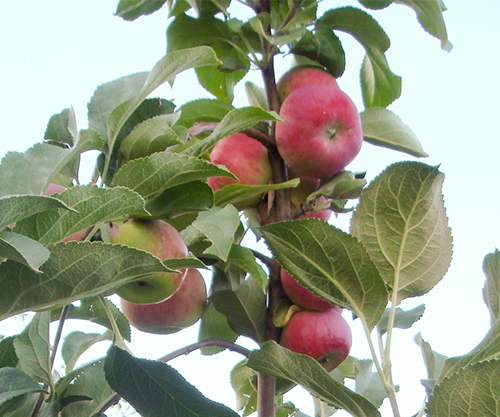
Fruiting occurs 3-4 years after budding, after 1 - 2 years you can already get a marketable crop from the trees. The yield and winter hardiness of the variety are good. Apple trees bear fruit regularly. Disease resistance is average, with an excessively humid summer, significant scab damage is possible.
The main advantages of the Silver Hoof apple tree include: high rates of early maturity and productivity, early ripening of fruits in harsh climatic conditions, smooth growth of trees, beautiful fruits with good taste, the ability to use apples for various kinds of processing.
The main disadvantages are: crushing of fruits when using poor agricultural technology, scab damage to an average degree in wet years, damage to apples by fruit rot when they are damaged by the moth.
This variety is promising for the selection of early-growing, winter-hardy summer varieties. With the participation of this apple tree, new elite seedlings superior to it have been created (including from crossing with scab immunity donors).
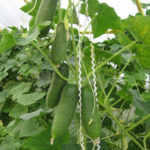
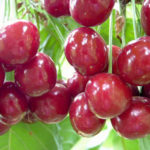

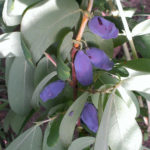





Of the early varieties, Silver Hoof is my favorite. Apples of this variety have been the first to end for 9 years: children are happy to eat fruits straight from the tree. Before pouring, apples have a pleasant, slightly sour taste. But as soon as they become "transparent", "glassy" - it is simply impossible to tear yourself away from them: juicy, sweet, with a honey flavor, with a bright aroma. However, I do not recommend plucking them all at once already poured: all the taste is lost during storage after a couple of weeks. Apples fall weakly from the tree, hanging until frost. But, unfortunately, they crack and are affected by fungal diseases (especially in wet years). Occasionally we use them for compotes - most often there is simply not enough fruit for these purposes, we eat everything. For all its shortcomings, I highly recommend it for its incomparable taste.
Apple Silver Hoof should be paired with other apple trees? The silver hoof is a self-fertile apple tree, therefore pollination with other varieties is necessary.
If there is one tree, then there will be no fruit?